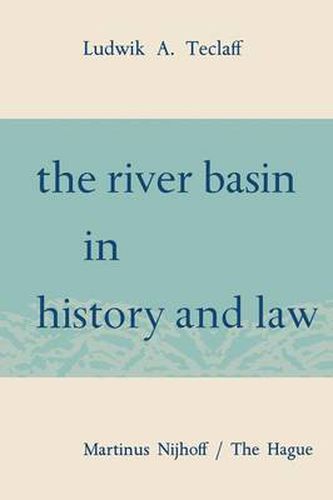Readings Newsletter
Become a Readings Member to make your shopping experience even easier.
Sign in or sign up for free!
You’re not far away from qualifying for FREE standard shipping within Australia
You’ve qualified for FREE standard shipping within Australia
The cart is loading…






This title is printed to order. This book may have been self-published. If so, we cannot guarantee the quality of the content. In the main most books will have gone through the editing process however some may not. We therefore suggest that you be aware of this before ordering this book. If in doubt check either the author or publisher’s details as we are unable to accept any returns unless they are faulty. Please contact us if you have any questions.
Fresh water is one of man’s most vital needs. The distribution of water within river basins has a direct bearing on the organization of water resources development to meet this ever-expanding need. River basins, despite their very great diversity in other respects, have one physical characteristic in common: each is a more or less self-contained unit within whose bounds all the surface and part or all of the ground waters form an interconnected, interdependent system. This inter dependence has such far-reaching implications - for pollution and flood control, apportionment of supply, relations between upstream and downstream riparians, to mention only a few examples - that the river basin has become almost universally accepted (within the past 20 or 30 years at least) as the unit of optimal water resources de velopment. Professor Teclaff’s work (which was originally submitted to the New York University School of Law as a doctoral dissertation) is the first fully developed response to the important resolution passed by the International Law Association at its New York meeting in I958 recognizing the legal nature of the international river basin. His study quite properly, therefore, poses the question whether the adoption of the river basin unit is a temporary phenomenon, reflecting the current stage of technology and of administrative, economic, and legal thought on water resources development, or whether the de terminative influence of the river basin’s physical unity which has always operated in the past will continue to operate in the future.
$9.00 standard shipping within Australia
FREE standard shipping within Australia for orders over $100.00
Express & International shipping calculated at checkout
This title is printed to order. This book may have been self-published. If so, we cannot guarantee the quality of the content. In the main most books will have gone through the editing process however some may not. We therefore suggest that you be aware of this before ordering this book. If in doubt check either the author or publisher’s details as we are unable to accept any returns unless they are faulty. Please contact us if you have any questions.
Fresh water is one of man’s most vital needs. The distribution of water within river basins has a direct bearing on the organization of water resources development to meet this ever-expanding need. River basins, despite their very great diversity in other respects, have one physical characteristic in common: each is a more or less self-contained unit within whose bounds all the surface and part or all of the ground waters form an interconnected, interdependent system. This inter dependence has such far-reaching implications - for pollution and flood control, apportionment of supply, relations between upstream and downstream riparians, to mention only a few examples - that the river basin has become almost universally accepted (within the past 20 or 30 years at least) as the unit of optimal water resources de velopment. Professor Teclaff’s work (which was originally submitted to the New York University School of Law as a doctoral dissertation) is the first fully developed response to the important resolution passed by the International Law Association at its New York meeting in I958 recognizing the legal nature of the international river basin. His study quite properly, therefore, poses the question whether the adoption of the river basin unit is a temporary phenomenon, reflecting the current stage of technology and of administrative, economic, and legal thought on water resources development, or whether the de terminative influence of the river basin’s physical unity which has always operated in the past will continue to operate in the future.